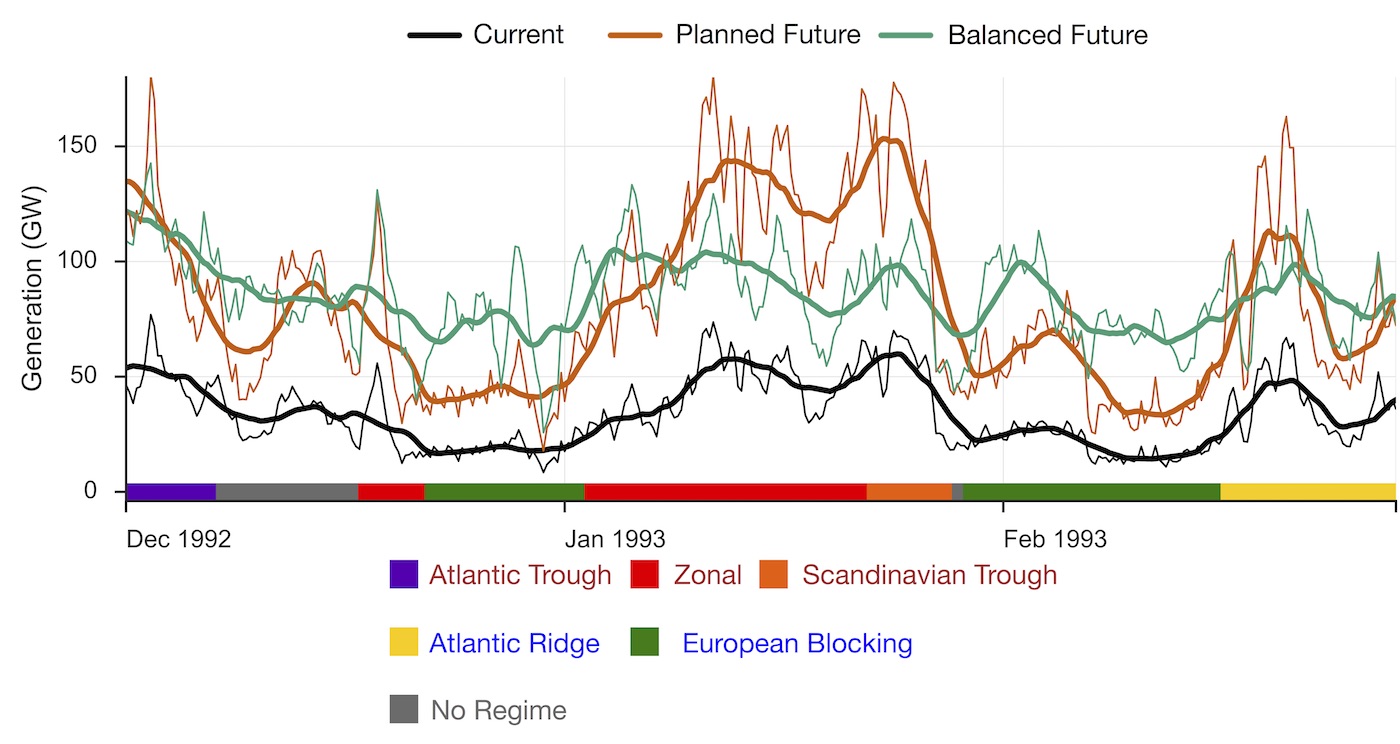Balancing European wind power
In a paper published in Nature Climate Change, we used a combination of a meteorological understanding of weather regimes and our Renewables.ninja wind and PV generation time series to show that by smart spatial deployment of future wind farms, based on our knowledge of weather regimes, it is possible to keep the European wind fleet’s multi-day variability to levels the power system is already dealing with today.

Time series of six-hourly European wind power output, assuming historical weather conditions from winter 1992-93. The thin lines are 6-hourly generation while the bold lines show the 5-day running mean. The shaded area on the x-axis shows the currently active weather regime. Based on the data reported in Grams et al. 2017
Read more...